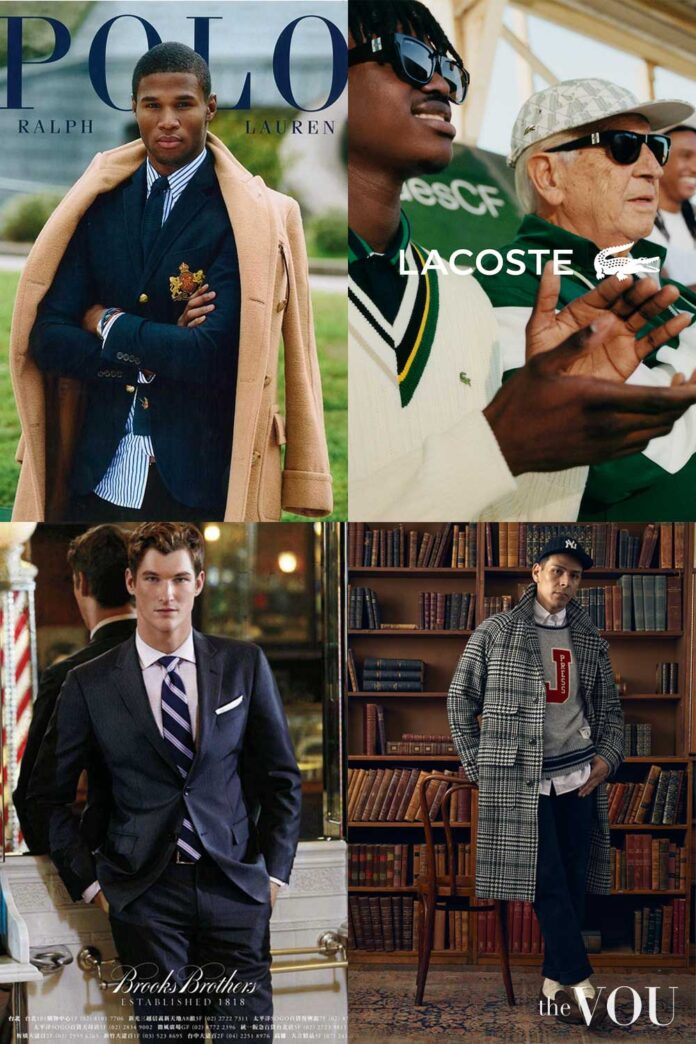How Branded Clothing Combines Fit, Function, and Fabric Innovation
How Branded Clothing Combines Fit, Function, and Fabric Innovation
Blog Article
The Relevance of Sustainable Apparel: Just How It Influences the Environment and Your Wardrobe
Lasting clothes is increasingly identified for its vital role in minimizing the ecological impact of the rapid fashion business. By concentrating on environment-friendly materials and honest production techniques, it deals with pressing ecological issues. This shift not only benefits the earth but additionally affects customer selections, causing a more thoughtful approach to wardrobe management. Recognizing these characteristics increases essential concerns regarding fashion's future and personal duty in shaping it.
The Environmental Impact of Rapid Fashion

Benefits of Sustainable Materials
Lasting materials offer significant benefits, particularly with environment-friendly material choices that minimize environmental damage. These materials likewise demonstrate longevity and longevity, reducing the requirement for regular replacements. Consequently, they add to a much more lasting style industry and promote accountable consumer habits.
Eco-Friendly Fabric Choices
While the garment industry has actually long been related to quick trends and ecological harm, the rise of green textile choices presents a transformative opportunity. Sustainable products such as organic cotton, hemp, and Tencel have acquired appeal due to their lower ecological influence. These materials are usually produced without dangerous pesticides and require much less water, minimizing their carbon impact - Branded Clothing. In addition, many environmentally friendly materials are eco-friendly, adding to a circular economic situation by minimizing waste. Choosing sustainable materials not only supports eco accountable practices but also promotes much healthier ecological communities. As customers come to be more knowledgeable about their purchasing power, the demand for eco-friendly textiles motivates brands to introduce and adopt even more lasting manufacturing techniques, eventually profiting the world and future generations
Resilience and Long Life Benefits
Several consumers are progressively identifying the longevity and long life advantages of sustainable materials in their apparel options. Unlike standard fabrics, sustainable products such as organic cotton, hemp, and recycled polyester are engineered to withstand damage, leading to garments that last much longer. This minimized regularity of replacement not only saves consumers cash with time yet additionally diminishes waste created by quick fashion. In addition, lasting garments typically employs green production methods that improve material strength, contributing to a decrease in the total carbon impact. By buying long lasting garments, customers can cultivate a more sustainable closet while appreciating premium items that maintain their visual and performance with time. Subsequently, resilience and longevity stand as essential advantages of selecting sustainable materials.
Lowering Waste Through Sustainable Practices
Minimizing waste in the apparel industry can be achieved with ingenious methods such as upcycling and repurposing products. In addition, embracing minimalist closet methods motivates consumers to focus on high quality over amount, eventually lowering garments intake. With each other, these techniques add greatly to an extra lasting clothing model.
Upcycling and Repurposing Materials
Upcycling and repurposing materials have arised as cutting-edge techniques in the fashion business, transforming disposed of textiles into important brand-new items. This technique not only reduces waste but also urges creative thinking and individuality in clothes style. By taking old garments and materials, designers can create one-of-a-kind items that show personal design while minimizing the need for brand-new sources. Furthermore, upcycling often needs much less energy and water compared to standard production procedures, substantially reducing the environmental impact of fashion. As customers come to be much more conscious of sustainability, the popularity of upcycled garments continues to increase, promoting a circular economic climate. Ultimately, these methods add to an extra lasting future, where style prioritizes environmental health over quick production and intake.

Minimal Wardrobe Strategies
As people progressively seek to minimize their ecological impact, embracing minimal closet approaches has actually obtained traction as an efficient technique to lasting fashion. These techniques stress top quality over amount, motivating customers to curate a smaller collection of functional, long lasting clothing. By concentrating on classic pieces that can be blended and matched, individuals can minimize the regularity of purchases and inevitably reduce waste.Additionally, minimalism advertises mindful consumption, advising customers to assess the ecological and honest implications of their choices. This method not just promotes a much more lasting lifestyle but additionally simplifies day-to-day decision-making pertaining to attire. As individuals accept minimalist concepts, they add to a fashion culture that values sustainability and accountable consumerism, inevitably causing a much more eco-conscious culture.
The Function of Honest Labor in Lasting Fashion
While view it now numerous consumers are increasingly familiar with the environmental repercussions of their clothes options, the significance of ethical labor methods in lasting fashion can not be ignored. Honest labor encompasses reasonable salaries, secure working conditions, and regard for workers' rights, forming the backbone of liable style manufacturing. Brands that focus on moral labor not just boost neighborhoods but additionally established a requirement for liability in the industry.Moreover, the combination of moral practices cultivates openness, allowing customers to make enlightened selections regarding their purchases. This technique contrasts dramatically with rapid style's exploitative labor versions, which commonly focus on revenue over people. By sustaining companies committed to honest labor, consumers add to a system that values human dignity alongside environmental sustainability. Subsequently, moral labor is not simply an add-on; it is essential to the broader goal of sustainable fashion, making sure that the quest for eco-friendliness does not come with the cost of civils rights.
The Impact of Lasting Garments on Carbon Emissions
Sustainable apparel has the potential to considerably reduce carbon emissions related to the fashion business. Traditional garment production contributes significantly to greenhouse gas emissions, mainly because of energy-intensive manufacturing processes and using non-renewable sources. On the other hand, lasting style concentrates on environmentally friendly products, such as organic cotton or recycled fibers, which typically need much less power to produce.Moreover, lasting brand names tend to take on more effective manufacturing techniques, decreasing waste and reducing total discharges. By prioritizing sturdiness and ageless design, lasting clothes urges consumers to get much less frequently, further decreasing the carbon impact connected with overconsumption.Additionally, several sustainable brands are dedicated to transparency in their supply chains, allowing consumers to make educated selections that straighten with their worths. Eventually, shifting towards sustainable clothes can cause a substantial decrease in carbon exhausts, adding to a much healthier planet and an extra sustainable future for the garment industry.
Sustaining Neighborhood Economic Situations With Lasting Selections
The change toward lasting apparel not just addresses environmental worries but additionally significantly advantages regional economic situations. By choosing sustainable fashion, consumers commonly sustain neighborhood craftsmens and local business, improving area resilience. These business normally operate a smaller sized scale, prioritizing craftsmanship and ethical methods over mass production.Investing in locally made sustainable garments fosters work get redirected here development and promotes economic development within communities. As customers become much more knowledgeable about the ecological effect of their purchases, they significantly choose items that reflect their values. This need motivates local producers to take on look what i found lasting techniques, contributing to a circular economy.Moreover, supporting regional services decreases transport discharges, lining up with eco-conscious customer habits. The interconnectedness of lasting garments and neighborhood economic climates emphasizes the vital role that private options play in advertising both ecological and economic health. By cultivating these neighborhood links, areas can prosper while also functioning towards a more sustainable future.
Transforming Your Wardrobe: Tips for a Sustainable Closet
As people seek to lower their environmental effect, transforming a closet into a sustainable closet becomes a vital step. One effective technique is to review existing clothes, maintaining just items that are put on on a regular basis and that straighten with sustainability goals. Prioritizing high quality over quantity is essential; buying resilient items from environmentally friendly brand names can considerably reduce waste.Additionally, incorporating second-hand things can rejuvenate a wardrobe while decreasing ecological damages. Organizing apparel swaps with close friends or giving away unused things can additionally advertise sustainability.When purchasing, people must seek products that are organic, recycled, or eco-friendly, and prevent fast fashion retailers - Branded Clothing. Finally, practicing mindful usage by thoughtfully considering each purchase can add to a more lasting way of life. By executing these tips, one can produce a closet that reflects individual design while sustaining environmental stewardship
Frequently Asked Questions
Just How Can I Determine Sustainable Clothing Brands?
To determine lasting apparel brand names, one should look into products utilized, look for accreditations like Fair Trade, and examine the brand's transparency concerning their production procedures, labor practices, and ecological effect, ensuring environmentally friendly and honest practices are focused on.
What Are the Prices Connected With Sustainable Fashion?
The expenses associated with sustainable fashion can vary substantially. Higher production expenses, honest sourcing, and eco-friendly products often lead to enhanced retail prices, which might discourage some customers while attracting environmentally aware consumers.
Can Lasting Garments Be Trendy and elegant?
Lasting clothes can indeed be trendy and trendy. Designers significantly focus on ingenious materials and moral production methods, showing that fashion and sustainability can coexist. Consumers currently have diverse alternatives that mix aesthetics with environmental consciousness.
How Does Laundering Garments Affect Their Sustainability?
Cleaning clothes significantly influences sustainability by consuming water and power, adding to contamination, and triggering microplastic release. Regular cleaning can break down textiles, reducing their life expectancy and raising the need for substitutes, inevitably worsening environmental concerns.
What Is the Lifespan of Sustainable Clothes Compared to Quick Style?
The lifespan of lasting apparel usually exceeds that of rapid fashion items, commonly long-term numerous years due to quality materials and craftsmanship. On the other hand, fast style garments might break down quickly, demanding more regular substitutes. Lasting clothes is increasingly recognized for its critical function in lessening the ecological influence of the fast style market. While lots of consumers are significantly mindful of the ecological repercussions of their clothes selections, the importance of moral labor methods in lasting fashion can not be neglected. Branded Clothing. Lasting clothes has the possible to greatly minimize carbon exhausts connected with the fashion industry. In contrast, sustainable style concentrates on eco-friendly products, such as natural cotton or recycled fibers, which commonly need much less power to produce.Moreover, sustainable brand names tend to embrace a lot more efficient manufacturing techniques, reducing waste and lowering overall exhausts. By prioritizing resilience and timeless style, lasting clothing encourages customers to get much less frequently, further lowering the carbon footprint associated with overconsumption.Additionally, lots of lasting brand names are dedicated to transparency in their supply chains, making it possible for customers to make enlightened selections that line up with their worths
Report this page